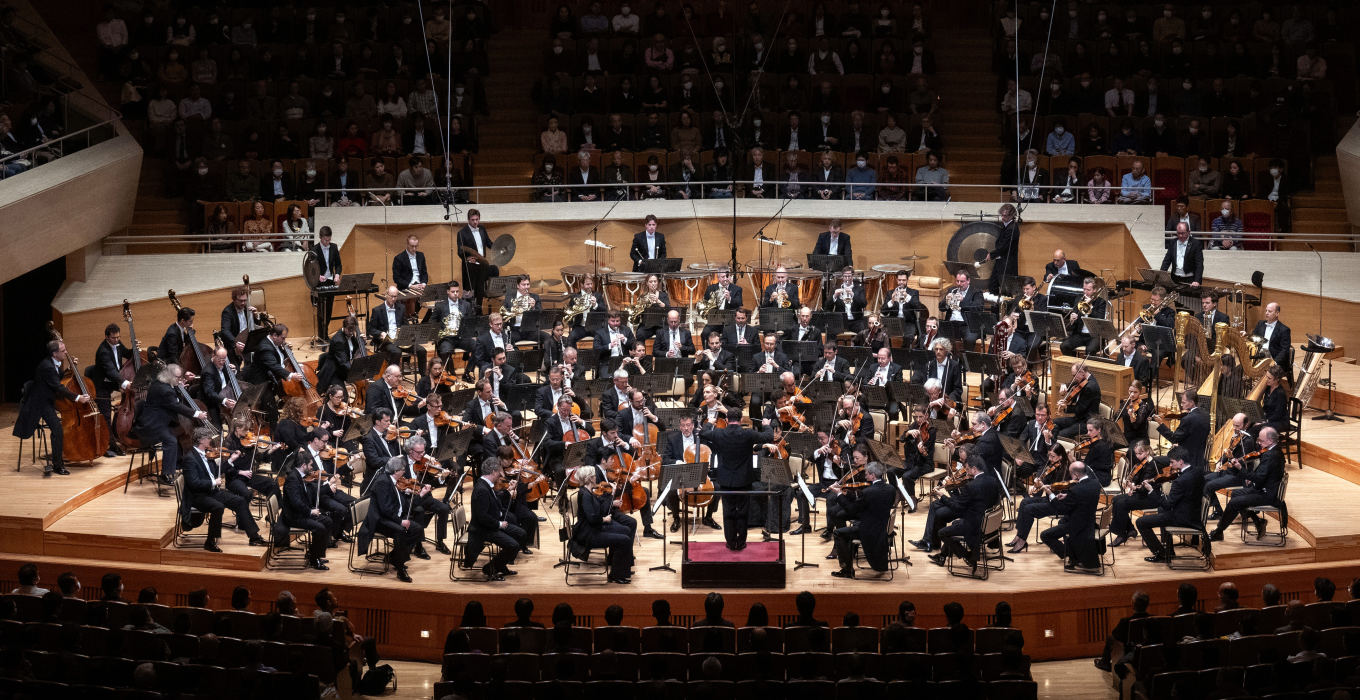Kirill Petrenko conducts Mozart, Berg and Brahms at Suntory Hall in Tokyo

As part of their first joint tour to Japan, the Berliner Philharmoniker and chief conductor Kirill Petrenko also performed various programmes at the famous Suntory Hall in Tokyo. In this concert, they presented works from the Philharmoniker’s core repertoire of Classical, Romantic and Modern music: in addition to Mozart’s elegant Symphony No. 29, they also performed Brahms’s momentous Fourth Symphony and Alban Berg’s groundbreaking Three Pieces for Orchestra op. 6.
Suntory Hall was Tokyo’s first concert hall specialising in classical music performances, and it is no coincidence that it is reminiscent of the Philharmonie Berlin: the positioning of the stage and audience seating was based on the concept of architect Hans Scharoun. Ever since the Berliner Philharmoniker became the first international orchestra to perform there in 1986 – shortly after the opening of Suntory Hall – they have appeared at this now legendary venue on every tour to Japan.
Wolfgang Amadeus Mozart wrote the A major Symphony K. 201 during his time in Salzburg, when he was particularly interested in the genre. Even in its lyrical passages, the work is characterised by a light mood and culminates in a fast-paced final movement with surprising harmonic twists and turns.
In an interview for the Digital Concert Hall, Kirill Petrenko describes Johannes Brahms’s Fourth Symphony as a “psychological drama” and a “tragedy”. The exuberant character of the scherzo, in which the triangle and piccolo are used, forms a clear contrast to the almost devotional tone of the slow movement. In the finale, there are 29 variations on the theme in a grand passacaglia. Brahms masterfully creates this fragmentation through unifying aspects such as expressive character, rhythm and key.
Brahms’s final symphony is contrasted with Alban Berg’s first composition for large orchestra, a work of new beginnings. As radically as Berg expresses himself in free tonality, he nevertheless remains faithful to role models such as Gustav Mahler. Theodor W. Adorno, who was a composition student of Berg’s in the 1920s, said of the march that concludes the work that it sounds as if “Schoenberg’s Pieces for Orchestra and Mahler’s Ninth Symphony are being played at the same time”.
© 2023 Berlin Phil Media GmbH
Category
Artists
Our recommendations
- Kirill Petrenko conducts Tchaikovsky’s “Queen of Spades” in Baden-Baden
- Kirill Petrenko with Strauss’s “Die Frau ohne Schatten” in Baden-Baden
- Beethoven and Mozart with Simon Rattle and Mitsuko Uchida at the Easter Festival
- Simon Rattle conducts a Beethoven evening in Taipei
- Daniel Barenboim conducts the 2014 Europakonzert in Berlin
- The 1999 Europakonzert in Krakow with Bernard Haitink, Emanuel Ax and Christine Schäfer